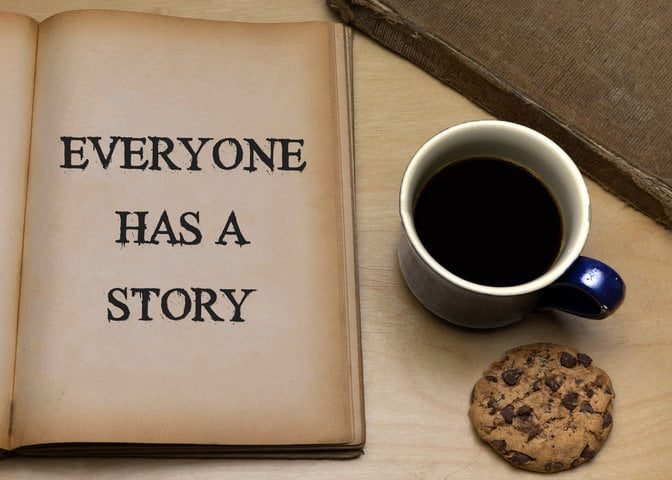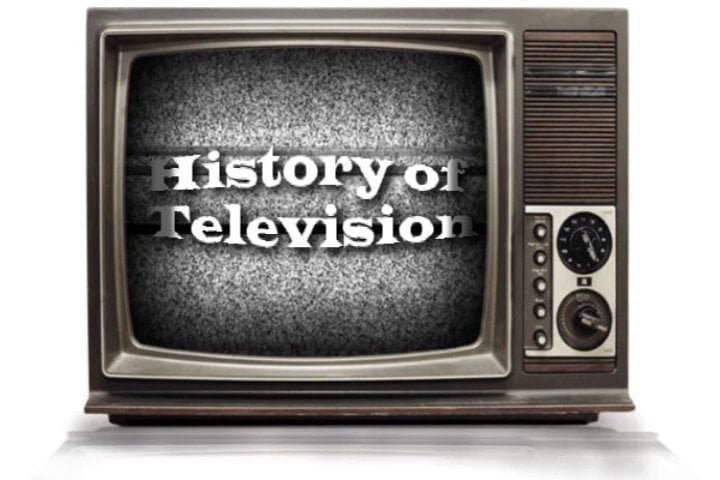1. Structuring Television Show Script Effectively
In the world of scriptwriting for television, the foundation of a compelling show lies in its structure. A writer should master organizing a narrative effectively to engage and captivate the audience. The structure includes laying the foundation for the entire narrative, determining how the story unfolds, how characters evolve, the conflicts, and finally, a resolution to captivate audiences and resonate with them.
In This Article


Structure of a Television Show
An hour-long drama usually has the following structure:
- Teaser
- Act I
- Commercial break
- Act II
- Commercial break
- Act III
- Commercial break
- Act IV
- Commercial break
- Tag
A Television Series Script Structure
TEASER
In an hour-long television series episode, first, a Teaser scene comes, followed by Act One, Act Two, Act Three, Act Four, and sometimes Act Five, depending upon the show.
This TEASER will usually be a short opening, restricted to one location or maybe to more. The teaser is an introduction to the characters and the world. The TEASER tease the peril, struggle, conflict, or situation the episode will tackle.
ACT I
ACT 1 starts after the TEASER. ACT 1 introduces the current story at hand and the action that will be started with the characters leading up to the point of the next act where the situation at hand will confront them. Usually, the writer ends ACT 1, or any other act, with a hook to grab the audience’s attention.
ACT II
In ACT 2, characters deal with conflicts with their full might. They’re struggling with it. They’re figuring out how to get through it. Much like the beginning of the second act of a feature film script, the characters often still have some hope or chance. By the end of this act, the audience feels like the characters may figure things out — until another hook is introduced that flips that hope or chance on its head, forcing the characters to face the fact that they may fail.
ACT III
This is where the characters are at their lowest point, and the bad guys or conflict is winning. Where the second act gave the audience hope that they’d figure it out, all too often, the third act is where that hope was proven to be false. By the end hook of this act, audiences will want to tune in to see how the characters will prevail despite such odds against them.
ACT IV
This is where the characters, against all odds, begin to prevail again. They start to triumph and win. They’ve likely learned from their missteps in the first and second acts and are now applying that to the conflict at hand.
ACT V
This is the closure act. Some shows end with the fourth act, while others end the fourth act with a significant hook and then use the fifth act to close things up.
Starting any ACT on a new page is usually a good practice. This helps the reader to distinguish between the breaks.
TAG
A short scene at the end of a show usually adds upbeat to the climax.
Television Script Format
Format and story structure are well-defined for television programming. A 1/2 hour story runs about 22 minutes; an hour show, about 45 minutes, with commercials placed for the remaining time. The breaks must be in the right spot and compelling enough to bring the viewer back to the program.
A TV Series is a serial. It refers to the collection of episodes that make up the series. Though one episode is a “Show.”
A TV Show and a TV Program mean the same thing. They both refer to an individual program or episode that you view. This can be an episode of a series, a movie, or any broadcast that takes up a time slot (as opposed to a commercial).
There’s little difference between the format of writing a screenplay for a film and writing a television play. The scene description, dialogue, character headings, and location headings are the same. The real difference is how the story is structured and how that structure is presented aesthetically through the format.
Generally, an hour-long episode script can be anywhere from 45-63 pages and usually consists of 50-55 pages. The primary sense is that one page equals one minute, and the writer needs to account for commercial breaks.


2. Hooking Your Audience: Creating Intriguing Premises
While writing a script for television, the premise is the foundation upon which the entire show is built. The concept generates curiosity and compels viewers to watch the show. Crafting an intriguing premise is a critical first step in hooking your audience.
We must ask ourselves, what makes our show unique and compelling? What’s the central question or conflict that drives the narrative? In answering these questions, we create a premise that sparks interest.
For example, a premise for a crime drama series might revolve around a brilliant but reclusive detective forced to solve a series of unsolvable murders. The premise promises intrigue, mystery, and the chance to explore complex characters.
3. Developing Multi-Episode Arcs and Character Growth
In scriptwriting for television, it’s essential to think beyond individual episodes and consider the broader narrative arcs that span multiple episodes or even seasons. This approach allows for character growth and intricate storylines that keep viewers engaged over a long period.
Characters should evolve, facing challenges that test their limits and lead to personal growth. This character development is what keeps viewers invested in the journey.
Imagine a character who starts as a meek office worker but gradually becomes a charismatic leader. Viewers witness this transformation throughout several episodes, forging a deeper connection with the character.
In a crime drama series, we might have a detective haunted by a past failure. As the series progresses, we can explore how this character confronts his insecurities, grows, and ultimately finds redemption or closure. These character arcs add depth to the story and resonate with viewers on a personal level.
Balancing Subplots and Main Plotlines
In scriptwriting for television, we often deal with multiple storylines, including subplots that run alongside the main narrative. These subplots can add complexity and depth to the story but must be carefully balanced to avoid overwhelming the audience.
Subplots should complement and enhance the main storyline, providing additional layers to the characters and their journeys. They can serve as a source of tension, comic relief, or exploration based on the show’s theme. However, ensuring that subplots do not overshadow the main plotline is crucial.
For instance, in a medical drama series, the main plotline may focus on the challenges a group of doctors faces in a busy hospital. Subplots could include the doctors’ personal lives, patient stories, and ethical dilemmas. These subplots should intertwine with the main narrative, adding depth to the characters and exploring relevant themes.
4. Navigating Dialogue and Subtext in Television Show Scripts
In scriptwriting for television, crafting authentic and compelling dialogue is an art. Dialogue is the backbone of character development. Characters’ words drive the narrative and reveal their personalities, motivations, and conflicts. But it’s not just about what characters say; it’s also about what remains unsaid—the subtext.
Subtext is the layer of meaning hidden within the words characters speak or their actions. It adds nuance, tension, and complexity to the narrative. Subtext adds depth to the scripts. It’s the unspoken emotions, hidden agendas, and underlying tensions that make the narrative compelling and add to the conflicts. Effective use of subtext can elevate the quality of dialogue and engage the audience deeper.
Silence can also be as powerful as words. The strategic use of pauses, gestures, facial expressions, and body language can amplify the subtext within a scene. A lingering, uncomfortable silence can convey tension or unease between characters, while a shared smile or a subtle touch can reveal affection or hidden desires. These non-verbal elements are a source of imagination for the audience to interpret and engage emotionally.


5. Exploring Genres: From Crime to Comedies
In the diverse landscape of television, scriptwriters can explore a wide range of genres, each with its unique conventions and storytelling techniques. Whether you’re drawn to crime dramas, sci-fi epics, or heartwarming comedies, understanding the intricacies of your chosen genre is paramount.
Each genre has its own set of expectations and tropes. For example, viewers anticipate complex mysteries and suspenseful plot twists in a crime drama. In contrast, a sci-fi series might delve into speculative technology and futuristic societies. By mastering the nuances of your chosen genre, you can effectively cater to your target audience’s preferences and expectations.
“Sitcom” means “Situational Comedy.” It’s a type of comedy that is based on the situations that characters get into. Another type of comedy is the “Romantic comedy” or “Romcom,” where the humor takes second place to the romance between the main characters.
Sitcoms and romcoms are usually just half-hour episodes; therefore, the structure and page counts are less and mostly limited to a three-act structure — the standard beginning, middle, and end. Dramas are typically one hour long and follow Four-Five Act Structure.
6. Emerging Trends in Scriptwriting for Television
The world of television scriptwriting is dynamic, continually evolving to embrace emerging trends and shifting viewer preferences. Screenwriters must adopt these changes and write accordingly to stay relevant and competitive.
One of the most transformative trends in scriptwriting for television is the dominance of streaming platforms. Services like Netflix, Amazon Prime, Disney-Hotstar, etc., have revolutionized how viewers consume content. With the binge-watching culture, entire seasons of TV series are now released simultaneously, fundamentally altering narrative pacing and structure.
Another prominent trend reshaping scriptwriting for television is a growing demand for diversity and inclusivity in storytelling. Audiences are increasingly vocal about the need for representation that mirrors the complexity of our diverse world and various cultural perspectives. This trend is driving the creation of more inclusive characters and narratives.
Incorporating these trends into scripts can help writers connect with a broader audience and showcase their adaptability as scriptwriters.
Short-Form and Anthology Series: Bite-Sized Storytelling
Short-form and anthology series are gaining popularity in the era of quick content consumption. Short-form series consists of episodes with shorter runtimes ranging from 10 to 20 minutes. These bite-sized stories cater to viewers with limited time and shorter attention spans.


On the other hand, the Anthology series presents a collection of self-contained episodes, each with a unique story and set of characters. Viewers can jump in at any point, making it easier to sample a series without committing to a long-term narrative.


This trend offers scriptwriters exciting opportunities to experiment with concise storytelling and explore a range of genres and themes within a single series.




